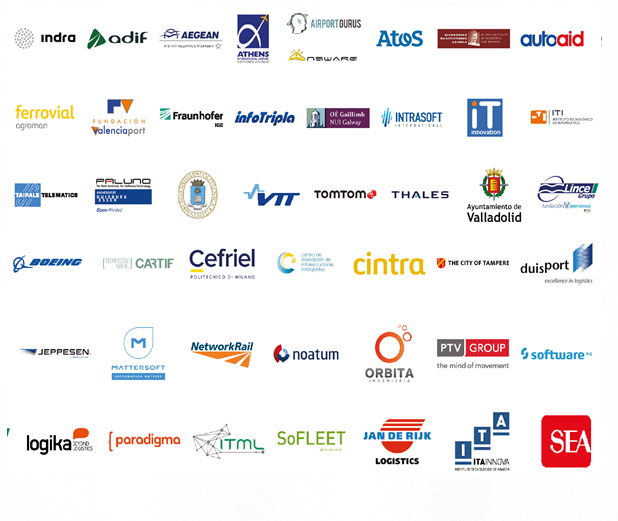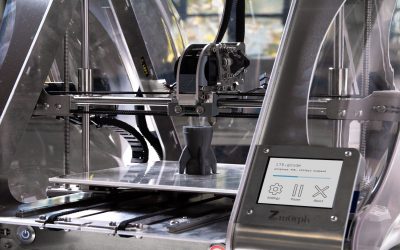cartif projects
Transforming Transport
Transformations Big Data brings to the mobility and logistics market
Description
Transforming Transport project represents a strong consortium of 48 leading transport, logistics and information techology stakeholders in Europe. The project demosntrated, ina realistic, measurable, and replicable way the transformations that Big Data can bring to the mobility and logistics market. TT address 13 piltos in 7 domains: highways; vehicle connectivity; rail infrastructure; ports; airportts; urban mobility and e-commerce logistics.
CARTIF was in charge of “Valladolid Integrated Urban Mobility and Freight” pilot. developed alogside City Council, LINCE, PTV and TomTom. This pilot developed and integrated urban mobility framework using data from the traffic management system and logistic information that result in a new traffic model and a planing tool for commercial and delivery fleets
Objectives
Transformin Transport project pilot solutions for freight delivery and urban traffic management in two medium-sized European cities: Tampere (Finland) and Valladolid (Spain).
Valladolid´s Pilot objectives:
- Better managemenet of load-unload areas. Decision making process backed up in data and objective criteria.
- Reduce the impact of load-unload areas on traffic congestion in the city centre.
- Increase user satisfaction (politiciands, citizens and delivey workers)
Actions
Valladolid Pilot:
- Generate traffic simulation models fot he city centre that include infromation from vehicles on the road and behaviour form logistic companies. Analyse different freight delivery scenarios to predict the impact of future lovcal traffic regulation and last mile delivery within city centre.
- Develop a dashboard to show valuable insights from Data Analytics tasks.
- Create an urban delivery planning tool to minimize time and distance travlled by freight vehicles.
Expected Results
Valladolid´s pilot results (tt-valladolidpilot.cartif.com)
- KDD process applied to real data in order to discover patterns in the traffic (nº vehicles) and the behaviour in the route (location and stop time).
- Traffic micro-simulation models and simulated different scenarios to know in advance the impact of future new regulations related to load and unload activities.
- Planning tool for delivery fleets, along with a dashboard that displays key insights.
Partners

Project Video
Please accept cookies to access this content
H2020
H2020-EU.2.1.1.
No. 731932

Overall Budget: 18,703,369.39 €
Contribution: 14,631,935.45 €
Duration: January 2017 – July 2019

Responsible
Marta Galende
Division of Industrial and Digital Systems
Networking
Industry Projects:
PROCTWIN
PROCTWIN aims to develop a demonstration platform to predict and optimise the use of multiple stages in steelmaking.
Bi0SpaCE
bi0SpaCE accelerates the digital and circular transformation of Europe’s bio-based industries through Digital Product Passports (DPP) enhanced with Industry 4.0 technologies.
ARISE
The ARISE project envisions a near future which aligns with Industry 5.0, prioritising, resilient, sustainable and human-centric work environments. In such a future, companies recognise that investing in industrial human-robot interaction (HRI) is essential for achieving better short- and long-term goals, rather than a cost.
PREDICTIVO dB
PREDICTIVOdB seeks to develop an innovative solution for the maintenance of wind farms that is quick to implement and has low energy and economic requirements.
INTELIFER
INTELIFER consists of the optimisation of the process and products of a granulated NPK fertiliser manufacturing line with the support of Artificial Intelligence.
s-x-AIPI
The overall objective of s-X-AIPI (self-X Artificial Intelligence for European Process Indsutry digital transformation) is to research, develop, test and experiment an innovative toolset of custom trustworthy self-X AI technologies and applications.
PhotonHub Europe
PhotonHub Europe is the unique european Hub (DIH) in photonic that integrates the best technologies, facilities and knowledge in photonics as well as the experience of 53 partners of all Europe. The result is the creation of a unique window that offers a huge variety of support resources for industry to accelerate the integration of photonic in its products and processes.
AI REGIO
AI REGIO project aims at supporting AI-driven Digital Transformation of European Manufacturing SMEs, by up-scaling and coordinating different regional smart specialization strategies, by integrating DMPs and DIHs.
AI4EU
AI4EU project aims to make available to users resources based on Artificial Intelligence (AI) that facilitate scientific research and innovation.
Lashare
Lashare conducted 28 Laser-based Equipment Assessments (LEA-Laser-based Equipment Assessments) addressing a broad range of laser applications.
SMART FACTORY
Smart Factory project has addressed industrial research and technological validation of advanced data and information management systems for manufacturing industries in Castilla y León.
DISRUPTIVE
DISRUPTIVE is a cross-border cooperation project which strives to promote and strengthen the collaboration, exchange and scientific production of the Digital Innovation Hubs (DIHs) located in Castilla y León and in the North of Portugal.
SMART-ROT
The SMARTROT project aims to ensure high maintainability and predictive fault detection in eddy current rotary inspection equipment used in the bar, wire and tube processing lines of steel processes.
SIMAFE
SIMAFE project, whose objective is the development of a training and training platform for railway maintenance personnel, based on advanced HMI techniques, electronic training…
3DCONS
The 3DCONS Project (New Construction Processes by means of 3D Printing) focuses on 3D printing technologies in the construction industry and covers several areas: robotics, the search for new materials, process automation, the technological drive of building and the development of design tools based on Building Information Modelling (BIM).
SHERIFF
The SHERIFF Project (Hybrid and Economic System of Flexible Integral Facade Rehabilitation) new tools for the energy rehabilitation of buildings.
CIBIC
The CIBIC project arises with the objective of improving the services provided by the companies of conservation of infrastructures, based on the application of new technologies to carry out the concept of intelligent systems that will help to improve the quality and the innovation of these services.
















